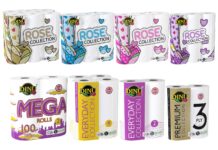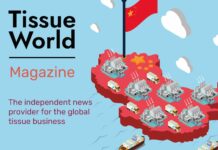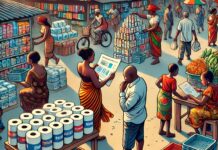Revenues from tissue sales rose by as much as 140% during the last pandemic. With climate change likely to increase the risk of further outbreaks, economics analyst Dr Phillip Lawrence, University of Sydney & Crown Institute of Higher Education, asks if the lessons have been learned.
Revenue sales figures for the tissue industry during the Covid pandemic broke all the records.
Research across sixteen countries showed that several nations experienced increases approaching, and in one case, surpassed 100%.
Italy topped countries in the northern hemisphere with an annual toilet paper revenue sales rise of 140%. The equivalent in Australia was 98%, Spain 82%, and the UK 80%. In the US, revenue from toilet paper sales rose by 60%.
The figures, given that the pandemic had such a devastating impact on many other businesses such as airlines, hotels, restaurants, retail and entertainment outlets, came in research by the German online data platform Statista*.
Impressive as the figures are, they were still outperformed by the pharmaceutical industry, where share values of companies in that sector revealed astronomical growth.
As the statistics confirm, the pandemic’s onset led to a surge in demand for tissue products, particularly toilet paper, as consumers stocked up on essentials due to community lockdowns and irrational fears of shortages, and perhaps also for emotional comfort.
Panic buying caused extensive shortages, which caused retailers to impose restrictions on the number of products individual purchasers could buy per shop visit. Remarkably, evidence of panic buying was repeated worldwide as if a secret internal switch suddenly turned on in every human.
The reasons for the ‘collective’ panic buying everywhere turned out to be an excellent area of academic study. Academic research revealed almost 30,000 articles which tried to understand why people suddenly needed to buy as much toilet paper as possible.
Panic buying toilet paper is not a new phenomenon, with its first major instance occurring in 1973 in the USA. The catalyst? A joke by late-night TV host Johnny Carson about toilet paper. The joke, misinterpreted by many as a serious warning on supply, led to a frenzy of buying that left supermarket shelves bare.
In response, official announcements trying to dissuade the masses from hoarding as many rolls as they could carry from stores had little impact.
But why toilet paper? According to some academic research, it’s because this simple tissue symbolises how people interpret civilisation. This raises interesting questions about consumer behaviour and the future of the tissue industry.
The Covid pandemic was not the first significant virus episode to cause widespread infection worldwide. Since the start of the century, we have experienced five (perhaps six) major virus events, the most significant of which is Covid. The SARS virus was the first, followed by Bird flu, MERS, Swine Flu, and Covid. Also, AIDS/HIV went global as the sixth. In two decades, we have entered an era that could be clearly defined as one associated with viruses. Some scholars have referred to Covid-19 (I believe the series of viruses collectively) as the century’s defining moment. However, unlike Covid-19, the other virus events did not spur the hoarding toilet rolls.
The critical issues surrounding toilet tissue production before the pandemic were relegated in importance in the dash for supply. Sustainability took a back seat during the period but has now rapidly returned to be central to the sector’s performance. Profitability remains a core issue, not so much around sourcing, production, and conversion, but more about customer expectations on price and quality and the pressure of competition. The danger for the sector following such an intense period of astronomical and unusual growth is that the product is seen to be even more of a consumable, and reduced in quality value. When people buy in bulk, they are really just after numbers. In the next few years, it could be that we see toilet paper becoming an invisible product with only utility value.
A challenge will be how to get customers to understand again the difference between one brand and another. Of course, this is a blessing for many firms at the lower end of the market. For the high-quality end, their product needs to be re-launched to be re-appreciated by the consumer. The Covid-19 episode has caused some interesting challenges for global businesses, not least how the tissue industry will develop and market its products in the immediate years to come.
Covid will not be the last virus to cause problems with globalisation. Some of the critical lessons we learned from the pandemic will hopefully be remembered when the next one arrives. For this reason, firms must take stock of what happened during the episode to their business ecosystem to be in a good position to respond positively – and rapidly – when the next one comes along. What we know from historic global events is that governments tend to respond irrationally but are rational about it. For example, in the late 1980’s, when the world faced an economic downturn, governments responded by pumping up national interest rates around the world. Some countries saw home mortgage rates reach more than 30%. In the 2008 global financial crisis, governments responded by reducing rates, which, in some cases, were below zero. These were extreme but opposite reactions to difficult economic conditions. What will they do next time?
Our changing global climate is likely to drive the next major pandemic event. Parts of the world are becoming wetter and warmer each year, allowing diseases to flourish as never before. Given that there have been five (or six) since the start of the century, it would seem statistically likely that we will see another major one relatively soon, perhaps even by the end of the decade. Chances are people would have learned that panic buying toilet rolls is irrational behaviour, but how will governments respond given their poor track record of learning from the past?
*Stockpiling Consumer Market Outlook: Toilet Paper Producers Roll’ing in the Dough, 2020.
































